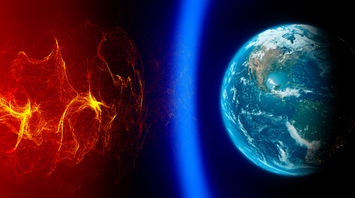When Will Be the Peak of Aurora Borealis Activity

Recently, an intense geomagnetic storm brought auroras to unprecedented latitudes. On Tuesday, September 17, the storm reached a G4 level, a severe classification that indicates significant disturbances, such as ground currents affecting power grids near the poles and frequent, long-duration radio blackouts and GPS issues. These disruptions occur due to solar particles—primarily electrons and protons—interacting with Earth’s magnetic field, which normally protects us from cosmic rays and charged particles. Without this magnetic shield, life's existence on Earth would be impossible, as continuous bombardment by these particles would destroy all life forms. This is prepared by SSP.
Despite the technological inconveniences, the geomagnetic storm also facilitated stunning auroras, observable at unusually low latitudes, including Alberta, the northernmost states of the USA, and even farther south into Arizona, Mississippi, and Texas. This visual marvel occurs when solar particles excite the atoms in Earth's ionosphere, causing them to emit light upon de-energization.
The recent aurora sighting followed earlier displays in May and January in the U.S. Aurora Borealis opportunities are expected to increase as the sun approaches its solar maximum stage in the solar cycle's peak, marked by heightened solar activity. This means regions that rarely see the northern lights may continue to experience this breathtaking phenomenon more frequently in the coming months.
As solar storms typically last from 24 to 72 hours, the recent disturbance has passed, but with the solar cycle at its peak, more storms—and the corresponding auroras—might occur in the ensuing weeks. Staying informed via NOAA’s and NASA’s detailed bulletins about such events' expected risks and timings is crucial, recognizing the dual nature of their impacts: technological disruptions and awe-inspiring natural spectacles.



















